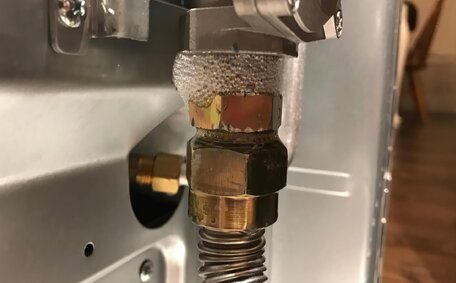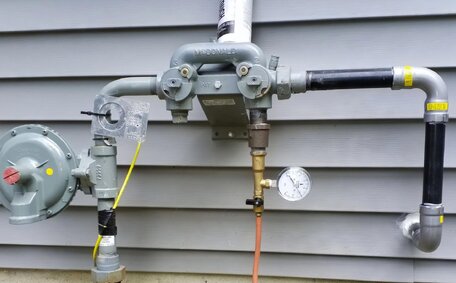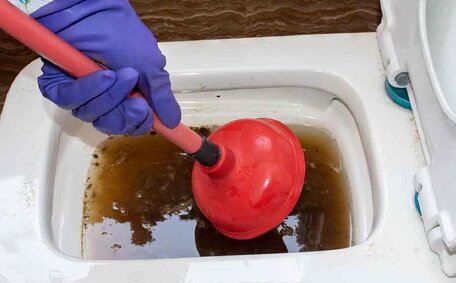Introduction to Gas Work Safety Gear
Working with gas lines and appliances presents substantial safety risks, necessitating the use of proper protective gear. Hazards such as toxic fumes, fires, explosions, falls, and tool-related injuries make it essential for oil gas sector professionals to utilise the appropriate PPE to mitigate these risks.
Understanding the Risks and Hazards in Gas Work
- Exposure to hazardous and flammable gases such as natural gas, propane, and acetylene, which can result in dizziness, breathing difficulties, loss of consciousness, or death upon inhalation.
- The risk of fires and explosions presents a significant concern, with ignition of leaking gas and flammable liquids leading to severe burns and trauma.
- Confined spaces pose a risk of asphyxiation when inert gases like nitrogen displace oxygen.
- Contact with corrosive gases such as ammonia can lead to damage to the face, eyes, skin, and lungs.
- Crystalline silica dust inhalation when cutting concrete around gas lines, causing silicosis.
- The hazards of working at heights and employing ladders make fall protection crucial.
- Power tools, heavy pipes, and equipment can lead to injuries if not handled with care.
- Class E hard hats meeting AS/NZS standards to protect the head from falling objects.
- Safety goggles with anti-fog coatings to protect eyes from dust and chemicals.
- Hearing protection like earmuffs in noisy environments.
- Gloves (neoprene, rubber, cryogenic) chosen based on the specific hazard.
- Safety shoes with slip-resistant soles to prevent falls.
- Flame-retardant clothing to minimise burn injuries.
- Respirators with appropriate gas/vapour cartridges during gas work.
Ensuring your team’s safety requires correct PPE usage, comprehensive training on its application, maintenance, and understanding its limitations. Regular health and safety assessments coupled with air monitoring ensure that protective gear is appropriate and effectively used, safeguarding your workforce.
Inhalation Dangers
Gas work exposes plumbers to dangerous inhalation hazards that make it essential to use respirator equipment. Toxic gases like hydrogen sulphide can cause nausea, headaches, breathing difficulty and even unconsciousness or death if inhaled. Natural gas leaks also pose asphyxiation and explosion risks in confined spaces.
Respirators providing purified breathable air are necessary to mitigate inhalation risks in the oil and gas field. Available types include:
- Disposable particulate respirators filtering out dusts.
- To ensure head, face, and eye safety, half or full face air-purifying respirators with removable cartridges filter specific gases and vapours.
- Explore the benefits of Powered Air-Purifying Respirators (PAPRs) with battery-powered blowers for enhanced respiratory protection in our dedicated blog section.
- Self-contained breathing apparatus (SCBA) with independent air supply for hazardous environments, including unsafe atmospheric conditions like gas leaks.
- Airline respirators supplying breathable air through a hose from a compressor.
To prevent respiratory problems, implement control measures tailored to the type and concentration of contaminants, as well as work environment conditions. Plumbers must receive comprehensive safety training and fit testing for using respirators. Regular inspection and maintenance by adequately trained personnel ensures peak performance.
Safety managers should conduct risk assessments to identify and mitigate potential dangers like gas leaks, oxygen deficiency, and inadequate ventilation. This helps plumbers pre-empt and mitigate potential hazards when dealing with hazardous gases.
Fire and Explosion Hazards
Gas work carries major fire and explosion risks requiring flame-resistant personal protective equipment (FRC PPE). Plumbers risk exposure to sudden flash fires or blasts from any ignition source interacting with leaking natural gas, propane, acetylene or other flammable gases, necessitating the use of equipment ppe.
Essential oil-resistant safety gear includes:
- Flame-resistant clothing like cotton or Nomex coveralls to minimise burn injuries.
- Equipment oil gas safety includes flame-resistant goggles, gloves, hard hats meeting relevant standards.
- Face shields, balaclavas covering exposed skin.
- Fire retardant treated safety boots.
Proper maintenance and usage of flame-resistant PPE are crucial as tears, wrist gaps, or fabric contamination can substantially diminish protection. Plumbers should receive training in FRC PPE selection, use and care including laundering to preserve flame retardant properties.
FRC safety equipment works alongside prevention controls like gas detection metres, adequate worksite ventilation and strict hot works procedures. However, industrial safety products like protective gear represent a crucial last line of level protection for plumbers facing potential gas fire/explosion hazards.
Chemical and Gas Exposures
Gas work also exposes plumbers to corrosive and hazardous chemicals requiring proper PPE to prevent health issues. Toxic gases like ammonia, chlorine, and hydrogen chloride can cause severe burns, lung damage or blindness if coming into contact with eyes or skin. Long-term exposure may lead to chronic respiratory disease or cancer.
For comprehensive body protection from chemical exposures, the wearing of essential PPE is required:
- Full-face respirators, as gases can absorb through the skin.
- Chemical goggles shielding the eyes.
- Long sleeves, gloves and aprons covering exposed skin.
Chemical resistant gloves, specifically neoprene and nitrile varieties, should be worn when handling corrosive substances as they can penetrate regular leather or fabric gloves. Safety managers must opt for suitable chemical PPE based on a risk assessment that accounts for the risks associated with the chemicals being used and work processes involved.
Proper usage training and maintenance, aligned with complete safety data, helps enhance PPE shielding and prevent accidental exposures or skin contact among gas plumbers. For more than just information on responding to exposure, keep SDS safety sheets on-site to ensure appropriate first aid measures.
Head and Eye Protection
Head protection is vital when working around debris, chemicals, or bright lights. Plumbers risk head injuries from falling objects or contact with pipes and equipment. Gas work also exposes eyes to dust, chemical splashes, and burns from heat, sparks or arc flash during welding.
Essential head and eye safety gear includes:
- Wide-brim hard hats meeting industry standards.
- Safety goggles protecting eyes from flying particles.
- Goggles or face shields guarding against chemical splashes.
- Welding masks/goggles for shielding UV light.
Regular inspection and your free maintenance are carried out to ensure PPE used in gas extraction remains in proper working condition. Proper usage training is also key - ill-fitted hard hats or tilted goggles lose effectiveness.
Safety managers must conduct worksite assessments to determine correct head and eye protection needs. But the most common requirement is that plumbers working with gas equipment or lines require hard hats and sealed goggles at minimum to prevent injuries.
Hard Hats
Hard hats are essential PPE for plumbers to protect the head from falling objects and contact hazards. AS/NZS-compliant hard hats designed to protect workers in the gas industry are Class E hard hats are designed to provide insulation from electrical hazards up to 20,000 volts to guard against arcs and flashes.
Class E hard hats provide 360-degree coverage around the head and consist of the shell, suspension system, and chin strap. The tough outer shell prevents penetration from sharp objects, safeguarding the person wearing it. The suspension system absorbs and distributes energy from impacts, while the chin strap ensures the hard hat stays secured.
Class E hard hats should be worn by all workers, not just plumbers, handling gas pipes or appliances where there’s a risk of head injury.
Proper use and maintenance preserves reliability - hard hats should be replaced according to manufacturer specifications after significant impacts or wear.
Safety Glasses and Goggles
Safety glasses and goggles protect the eyes from flying debris, chemical splashes, dust and intense light when working with gas lines. Plumbers risk eye injuries from particles ejected when cutting pipes or using power tools. Gas work also exposes eyes to hazardous fumes, chemical leaks and bright flashes during welding.
Essential eye protection includes:
- Impact-resistant safety glasses with side shields guarding against flying fragments.
- Sealed goggles protecting against dust, fumes and splashes.
- Welding safety glasses goggles with special filters block intense UV/infrared light from arcs.
Regular cleaning and inspection preserve optical clarity and prevent vision-obscuring scratches. Quality eye protection reduces accidents and long-term health issues like cataracts or permanent eye damage in gas workers.
Plumbers must receive training in correct use and maintenance. Proper fit is vital for safety eyewear to work effectively.
Respiratory Protection
Respiratory protection is crucial for plumbers to guard against dangerous gas, vapour, dust, and oxygen deficiency hazards when working on gas lines or appliances. Harmful exposures can occur from inhaling toxic fumes like hydrogen sulphide or ammonia leaks, breathing in silica dust when cutting concrete, or working in confined spaces with poor ventilation.
To protect the lungs and prevent long-term illness, essential respiratory PPE includes:
- Disposable dust masks filtering out particulate hazards
- Half or full face air-purifying respirators, equipped with the correct chemical cartridge for the exposure
- Powered air purifying respirators (PAPRs) offering increased airflow and comfort
- Self-contained breathing apparatus (SCBA) providing fully independent air supply
Correct and regular fit testing ensures plumbers choose suitable respirator brands and sizes. Mandatory medical checks confirm workers can wear gas personal respiratory PPE without health issues. Detailed training imparts knowledge of correct inspection, how the equipment is used, cleaned, and how it should be stored.
Safety managers must continually monitor worksite air quality and atmospheric conditions when gas plumbers enter confined spaces. This indicates actions to include safety respiratory precautions and equipment so inhalation risks remain controlled.
Air-Purifying Respirators
Air-purifying respirators (APRs) are essential respiratory protection equipment for plumbers working around hazardous gases. APRs use removable filter cartridges designed to clean specific airborne contaminants before they can be inhaled.
Different APR types include:
- Disposable half mask respirators with particulate filters remove dusts.
- Half facepiece elastomeric respirators with chemical cartridges filter out gases and vapours.
- Full facepiece elastomeric respirators providing face and eye protection as well.
- Powered air purifying respirators (PAPRs) use a battery-powered blower for increased airflow.
Selection of cartridge types should be based on a worksite risk assessment considering potential gas exposure hazards. Proper initial and annual fit testing ensures APRs form an adequate face seal.
APR training is critical covering inspection, use, cleaning, storage and cartridge change out schedules. Maintained correctly, APRs provide crucial protection when air monitoring indicates gas or particulate hazards may be present.
Supplied Air Respirators
Supplied air respirators (SARs) provide clean, breathable air to the plumber from an independent source. This protects against oxygen deficiency or highly toxic contaminants when working in confined spaces such as underground gas lines or storage tanks.
With SARs, the air supply comes from either:
- A compressor on the worksite providing airline to the facepiece or hood.
- Cylinders of compressed air carried by the worker.
Types of supplied air respirators include:
- Full facepiece respirators
- Half masks
- Loose fitting hoods/helmets
- Tight fitting facepieces offering higher protection
SARs maintain positive pressure inside the facepiece, preventing contaminant leaks. When atmospheric oxygen content falls below 19.5% or highly hazardous fumes are present, rules stipulate that PPE should include supplied air respirators to safeguard plumbers.
Protective Clothing
The ppe required, such as flame-retardant clothing, safety boots, and chemical-resistant gloves, form a crucial safety barrier for gas plumbers. Appropriate protective wear prevents or minimises potential injuries from heat, chemical contact, falling objects and other onsite dangers.
Key gas work protective clothing includes:
- Flame-resistant (FR) clothing like coveralls, jackets, and trousers are crucial to protect against flash fires or sparks.
- Leather or flame-proofed gloves providing hand protection from sharp tools and heat.
- Steel-capped, chemical-resistant safety boots guarding feet against falling objects, slippery surfaces and corrosive liquids.
- High visibility vests facilitating visibility around moving equipment.
- Durable, close-fitting aprons or arm covers shielding skin from molten metal splatter if welding.
employers support their own safety environment by supplying suitable protective workwear conforming to Australian standards. Proper PPE training ensures correct inspection, wearing, cleaning and storing procedures are followed, providing clear information about their use. With diligent care, oil gas PPE forms some of the most crucial barriers keeping gas professionals safe.
Flame Resistant Clothing
Flame resistant clothing (FRC) is essential personal protective equipment to shield gas plumbers against severe burn injuries from flash fires or explosions. Australian Standard AS/NZS 4967 sets minimum fabric flammability performance levels that FRC garments must meet.
Typical FRC includes:
- Flame resistant cotton shirts, pants, coveralls.
- Nomex suits made of inherently fire-retardant synthetic fibres.
- Treated garments like FR cotton with a chemical finish improving flame resistance.
All exposed skin should remain covered by FRC made from appropriate weight and weave fabrics based on the risk. Garment design, laundering, repair and storage also affect protective performance over time.
Appropriate use of FRC reduces burn severity due to its self-extinguishing properties. When working in oil gas industries, emergency response plans must account for FRC protection levels to ensure plumbers can evacuate safely.
Supplemented by other precautions like gas leak controls, adequate ventilation and fire suppression systems, FRC represents an indispensable final barrier protecting gas plumbers from catastrophic injuries.
Gloves
Protective gloves are essential personal protective equipment (PPE) shielding the hands from cuts, burns, chemicals and impacts when working on gas lines. Plumbers risk hand injuries from sharp tools and metal fragments when cutting pipes. Contact with gas appliances can cause burns, while fuel gases or corrosive fluxes expose skin to irritation or chemical damage.
Choosing the right glove depends on the hazard involved:
- Cut-resistant gloves protect against sharp hand tools or metal debris.
- Welding gloves can provide insulation against heat and sparks.
- Chemical-resistant gloves, such as neoprene and nitrile, provide a shield against irritating or harmful substances.
- Insulated winter gloves guard in cold weather applications.
Proper usage training ensures gloves should be worn correctly without impairing grip or dexterity. Rips or holes can seriously impact hand protection, requiring immediate replacement. Following glove selection, inspection and maintenance procedures keeps hands safe when handling hazardous gas line components.
Safety Footwear
Safety footwear with steel toe caps and slip-resistant soles represent essential personal protective equipment (PPE) for gas plumbers. AS/NZS 2210-compliant safety boots guard the feet against common injuries like falling objects, punctures from sharp debris and burns from spills.
Key safety footwear features include:
- Steel caps protecting toes from crushing injuries if heavy pipes, tools or equipment fall.
- Midsole penetration shields preventing sharp objects like nails piercing the sole.
- Heat-resistant outers safeguarding against hot water contact up to 120°C.
- Slip-resistant soles providing firm grip on slippery wet surfaces.
Daily inspection checks for tears or sole damage compromising protection.
High-visibility strips enhance worker visibility.
Steel-Toed Boots
The steel toe caps protect toes if heavy pipes, equipment or tools fall, while puncture-resistant midsoles prevent sharp objects like nails or metal shards from piercing through the sole.
Australian/New Zealand Standard AS/NZS 2210 sets minimum requirements for protective footwear. Quality steel-toed boots also feature:
- Heat resistance up to 120°C
- Slip-resistant soles
- Electrical insulation protecting against electric shocks
- Comfortable fit allowing long wear without foot fatigue
Routine inspections check for cracks or wear that could compromise protection. A proper fit and secure lacing provide optimal stability when working in oil fields. Well-maintained steel-toed boots provide indispensable shielding for gas workers facing injury risks on the job.
Proper Training and Maintenance
Proper training and maintenance of personal protective equipment (PPE) is essential for gas industry workers to stay protected on the job. Everyone working with hazardous substances or dangerous tools/machinery must receive formal training in their various PPE items covering:
- Inspection routines ensuring PPE is worn and assessing for damage prior to use
- Usage instructions and limitations of the equipment
- Cleaning methods between uses
- Proper storage to avoid damage or contamination when not worn
- Scheduled replacement frequencies according to manufacturer specifications
Regular inspection and maintenance keep PPE in reliable working order and prevent compromised safety due to wear and damage, ensuring worker and business protection. Workers need to know about selection rationale, proper use, storage, and disposal protocol for their equipment.
Cultivating a workplace culture that underscores the importance of PPE in injury prevention increases workers’ adherence to proper use and communication about issues or knowledge gaps.
Supplying suitable PPE, emphasising thorough training, and setting a positive example are key actions managers can take to showcase their commitment to health and safety leadership. Keeping safety gear maintained and personnel trained works hand in hand with engineering controls to minimise gas plumbing hazards.






